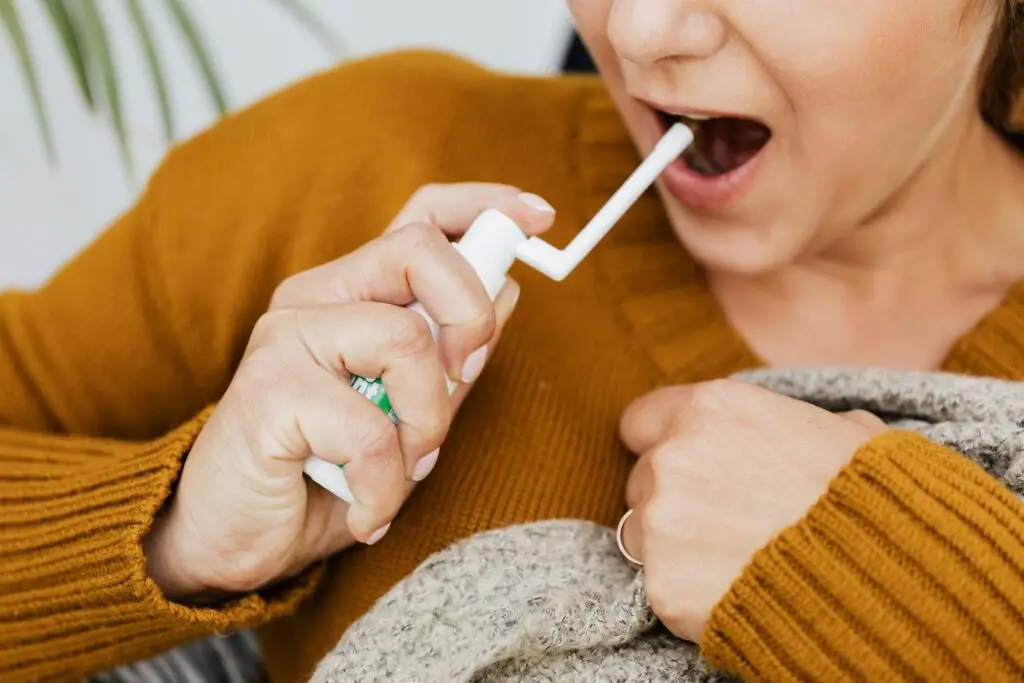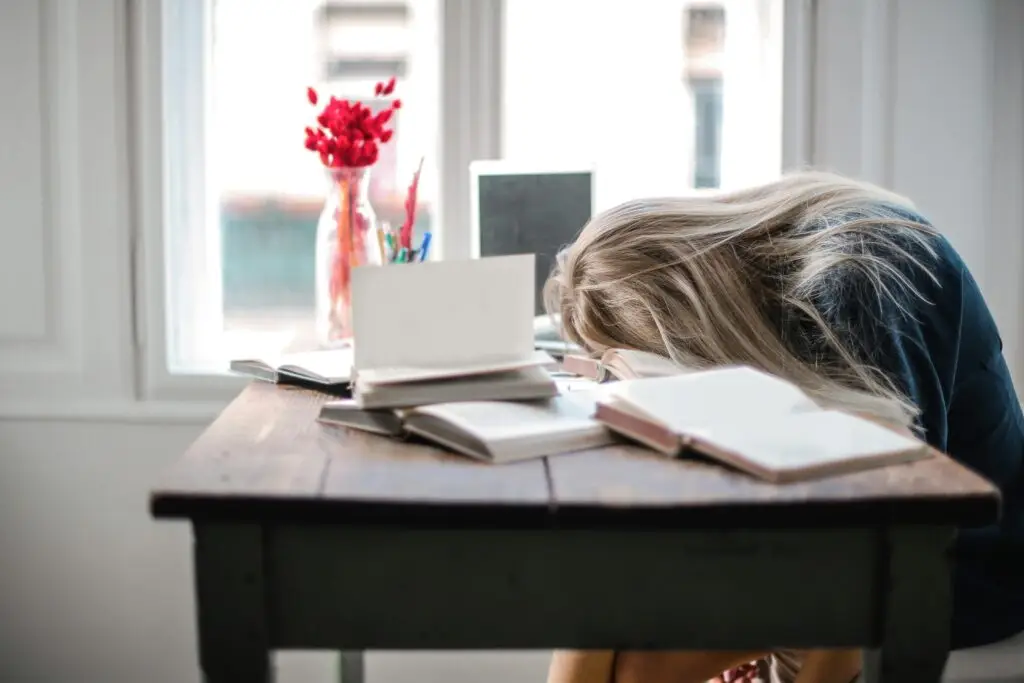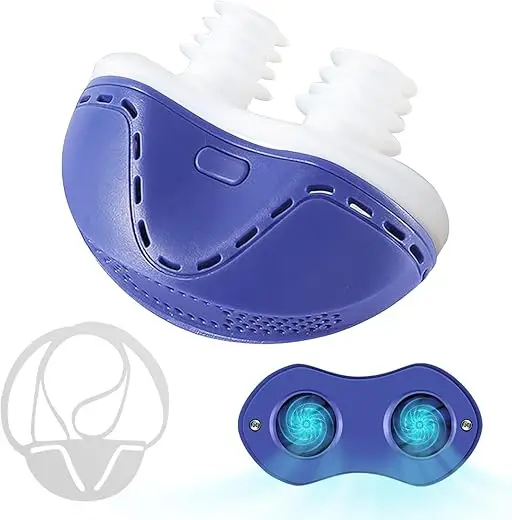Waking up with a mouth so dry you can’t swallow? Tongue stuck to the roof of your mouth? You’re not alone – dry mouth affects 40% of CPAP users and is one of the top reasons people abandon therapy. But here’s the truth: dry mouth is almost always fixable with the right approach.
This comprehensive guide provides 15 proven solutions, explains why CPAP causes dry mouth, and shows you exactly how to wake up comfortable again. We’ve compiled advice from sleep specialists, dentists, and thousands of successful CPAP users who’ve conquered this problem.
Table of Contents
Understanding CPAP Dry Mouth {#understanding}
What’s Happening in Your Mouth
Normal Mouth Environment:
- Saliva production: 1-1.5 liters daily
- Natural moisture maintained
- pH balanced
- Protective bacteria present
With CPAP Dry Mouth:
- Saliva evaporates rapidly
- Mouth breathing increases
- Tissues become parched
- pH becomes acidic
- Bad bacteria thrive
Why This Matters
Immediate Effects:
- Difficulty swallowing
- Burning sensation
- Cracked lips
- Bad breath
- Taste changes
- Speech difficulties
Long-Term Risks:
- Tooth decay acceleration
- Gum disease
- Oral thrush
- Throat infections
- Dental work damage
- Nutrition problems
Quality of Life Impact:
- Sleep disruption
- Relationship strain (bad breath)
- Eating difficulties
- Constant thirst
- Speaking discomfort
- CPAP non-compliance
Quick Relief (Tonight)
Immediate Solutions for Tonight
If you’re suffering right now, try these before bed:
1. Increase Humidity (5 minutes)
- Turn humidifier to level 5-6
- Use heated tubing if available
- Add room humidifier
- Close bedroom door
2. Mouth Preparation (2 minutes)
- Swish with water
- Apply lip balm liberally
- Use oral moisturizer
- Avoid mouthwash with alcohol
3. Adjust Your Mask (3 minutes)
- Check for leaks (major cause)
- Ensure proper fit
- Try slightly looser straps
- Seal test before sleep
4. Bedside Relief Kit Keep within reach:
- Water bottle
- Lip balm
- Sugar-free lozenges
- Oral spray
5. Emergency Middle-of-Night Relief
- Sip water (don’t gulp)
- Oral moisturizing spray
- Biotene gel on tongue
- Adjust humidity up
The Root Causes
Primary Cause #1: Mouth Breathing (65% of Cases)
Why It Happens:
- Nasal congestion
- Deviated septum
- Habit from pre-CPAP
- Mask leaks
- High pressure
The Vicious Cycle: Dry mouth → More mouth breathing → Drier mouth → Worse breathing
Primary Cause #2: Insufficient Humidification (25% of Cases)
Common Scenarios:
- Humidity too low
- No heated tubing
- Cold bedroom
- Dry climate
- Water chamber empty
Primary Cause #3: Mask Leaks (8% of Cases)
How Leaks Cause Dry Mouth:
- System compensates with higher flow
- Increased air volume
- Mouth opens to breathe
- Rapid moisture loss
Contributing Factors
Medical:
- Medications (400+ cause dry mouth)
- Diabetes
- Sjögren’s syndrome
- Radiation therapy
- Autoimmune conditions
Lifestyle:
- Alcohol consumption
- Caffeine intake
- Smoking
- Dehydration
- Mouth breathing habit
Environmental:
- Low humidity climate
- Heating/AC use
- Altitude
- Seasonal changes
Solutions: Equipment Adjustments
Solution 1: Optimize Humidifier Settings
The Science: Proper humidification can eliminate dry mouth in 70% of users
Step-by-Step Optimization:
Week 1: Baseline
- Start at level 4
- Note morning dryness (1-10 scale)
- Track water usage
- Document room temperature
Week 2: Increase Gradually
- Increase by 1 level every 2-3 nights
- Monitor for rainout
- Find your sweet spot
- Most need level 5-7
Climate Considerations:
| Climate Type | Recommended Setting | Additional Tips |
|---|---|---|
| Dry/Desert | 6-8 | Room humidifier essential |
| Humid/Coastal | 3-5 | May need less |
| Cold Winter | 5-7 | Heated tubing crucial |
| AC/Heated Rooms | 5-7 | Monitor regularly |
Pro Tips:
- Preheat humidifier 10 minutes before bed
- Use only distilled water
- Clean weekly to maintain efficiency
- Replace water chamber if mineral buildup
Solution 2: Add Heated Tubing
Why It’s Game-Changing: Maintains humidity from machine to mask
Benefits:
- 40% reduction in dry mouth complaints
- Prevents rainout
- Allows higher humidity
- Consistent moisture delivery
Cost-Benefit Analysis:
- Cost: $35-50
- Lifespan: 6-12 months
- Monthly cost: $3-8
- Effectiveness: High
Installation Tips:
- Ensure compatibility
- Set temperature 2-3° below room
- Adjust based on comfort
- Cover tube in very cold rooms
Solution 3: Switch to Full-Face Mask
When Necessary: Chronic mouth breathing despite other interventions
Transition Strategy:
- Try a nasal mask + chin strap first
- If unsuccessful after 2 weeks
- Get fitted for full-face
- Allow 1-2 week adjustment
- Focus on a proper seal
Best Full-Face Masks for Dry Mouth:
- ResMed AirFit F20 (excellent seal)
- F&P Vitera (humidity-friendly)
- Philips DreamWear Full (minimal contact)
Success Rate: 85% eliminate dry mouth with proper full-face mask
Solution 4: Fix All Mask Leaks
Leak Detection Method:
- Turn on CPAP
- Lie in sleep position
- Feel around entire mask
- Listen for hissing
- Check data for leak rates
Common Leak Points & Fixes:
- Bridge of nose: Loosen top straps
- Cheeks: Adjust lower straps
- Mouth (nasal masks): Need chin strap
- Under chin: Wrong size mask
Acceptable Leak Rates:
- <24 L/min: Normal
- 24-40 L/min: May cause dry mouth
- 40 L/min: Definitely contributing
Solution 5: Lower Pressure (With Doctor Approval)
Why It Might Help:
- High pressure forces mouth open
- Increases airflow volume
- Overwhelms humidification
- Creates mouth breathing
Safe Adjustment Process:
- Review sleep data with doctor
- If AHI well-controlled
- Try reducing 1-2 cm H2O
- Monitor for 2 weeks
- Ensure therapy still effective
Alternative: Switch to Auto-CPAP for variable pressure
Solutions: Behavioral Changes {#behavioral-solutions}
Solution 6: Master Mouth Taping (Controversial but Effective)
Important: Consult doctor first. Not for everyone.
Safe Taping Method:
- Use medical tape only
- Small piece vertically on lips
- Leave corners open
- Start during daytime naps
- Remove if uncomfortable
Products:
- 3M Micropore tape
- SomniFix strips
- Azazar mouth tape
Success Rate: 60% report significant improvement
Solution 7: Chin Strap Training
How Chin Straps Help:
- Keep mouth closed
- Train jaw position
- Reduce air escape
- Maintain nasal breathing
Proper Use:
- Not too tight (2 finger rule)
- Position below jaw joint
- Wear consistently
- May take 2-3 weeks
- Can discontinue once trained
Best Options:
- Premium: Ruby-Style Adjustable ($25-35)
- Budget: Basic Respironics ($15-20)
- Comfort: Sunset Deluxe ($30-40)
Solution 8: Daytime Nasal Breathing Training
Breathing Retraining Exercises:
Exercise 1: Conscious Breathing (5 min, 3x daily)
- Close mouth gently
- Breathe through nose only
- Count 4 in, 4 out
- Build to 10 minutes
Exercise 2: Tongue Positioning
- Rest tongue on roof of mouth
- Tip behind front teeth
- Maintains closed mouth
- Practice throughout day
Exercise 3: Buteyko Method
- Reduced breathing exercises
- Improves nasal function
- Online courses available
- 4-6 week programs
Solution 9: Optimize Sleep Position
Position Impact on Dry Mouth:
- Back sleeping: Mouth falls open
- Side sleeping: Better closure
- Elevated head: Reduces mouth breathing
Solutions:
- Wedge pillow (30-45°)
- Tennis ball shirt (prevents back sleeping)
- Positional therapy devices
- CPAP pillows with cutouts
Success Tip: Combine position change with other solutions
Solution 10: Evening Hydration Protocol
Strategic Hydration Timeline:
6 PM: Last large fluid intake 7 PM: Moderate sipping only 8 PM: Small sips 9 PM: Minimal intake Bedtime: Rinse and moisturize only
Daily Target: 64-80 oz throughout day (not evening)
Avoid:
- Alcohol (extreme drying)
- Caffeine after 2 PM
- Sugary drinks
- Acidic beverages
Solutions: Products & Remedies {#product-solutions}
Solution 11: Oral Moisturizing Products
Biotene Product Line:
Oral Rinse:
- Use before bed
- Alcohol-free
- Enzymatic action
- Cost: $6-8/bottle
Oral Balance Gel:
- Apply to tongue/cheeks
- Longer lasting
- Night formula available
- Cost: $8-10/tube
Spray:
- Bedside use
- Quick relief
- Portable
- Cost: $5-7/bottle
User Tip: “Gel before bed, spray for night wakings” – Maria K.
Solution 12: XyliMelts Adhesive Discs
How They Work:
- Stick to gum/cheek
- Slowly dissolve
- Stimulate saliva
- Last 4-8 hours
Usage:
- Place 1-2 discs before sleep
- Mild mint or unflavored
- Safe to use nightly
- Cost: $10-12 for 40 discs
Success Rate: 75% report improvement
Solution 13: Room Humidification
Recommended Levels:
- Bedroom humidity: 40-50%
- Too low: Increases dry mouth
- Too high: Mold risk
Best Humidifiers:
- Levoit LV600HH ($70-90)
- Warm/cool mist
- Auto humidity
- Large capacity
- Honeywell HCM350 ($50-70)
- Germ-free
- Quiet operation
- Easy cleaning
Placement: 3-6 feet from bed, elevated
Solution 14: Natural Remedies
Aloe Vera Juice:
- Rinse before bed
- Natural moisturizer
- Anti-inflammatory
- Mix 1:1 with water
Coconut Oil Pulling:
- Swish 1 tsp for 30 seconds
- Natural antimicrobial
- Moisturizes tissues
- Spit out (don’t swallow)
Slippery Elm Lozenges:
- Natural mucilage
- Coats mouth tissues
- Sugar-free versions
- Use during night waking
Solution 15: Prescription Solutions
When OTC Fails, Consider:
Pilocarpine (Salagen):
- Stimulates saliva production
- Prescription required
- Side effects possible
- Very effective
Cevimeline (Evoxac):
- Similar to pilocarpine
- Longer acting
- Fewer side effects
- Insurance may cover
Prescription Oral Rinses:
- NeutraSal
- Caphosol
- SalivaMAX
- Higher effectiveness
Preventing Complications
Dental Health Protection
With Dry Mouth, You Must:
- See dentist every 3-4 months
- Use prescription fluoride toothpaste
- Avoid sugary drinks/snacks
- Consider dental sealants
- Monitor for cavities closely
Daily Dental Protocol:
- Brush with fluoride paste
- Floss thoroughly
- Fluoride rinse
- Xylitol gum/mints
- Regular water rinses
Preventing Oral Infections
Watch For:
- White patches (thrush)
- Sore throat persisting
- Taste changes
- Burning sensation
- Difficulty swallowing
Prevention:
- Good oral hygiene
- Probiotics
- Avoid antibiotics when possible
- Treat dry mouth aggressively
- Regular dental visits
When to See a Doctor
Red Flags Requiring Medical Attention
See Doctor Within 48 Hours If:
- Severe pain swallowing
- White patches in mouth
- Bleeding gums
- Persistent sore throat
- Fever with dry mouth
Schedule Appointment If:
- Dry mouth persists despite solutions
- Affecting nutrition
- Multiple cavities
- Medication side effects
- Quality of life severely impacted
What to Tell Your Doctor
Bring This Information:
- CPAP settings and usage data
- Humidity levels tried
- Solutions attempted
- Medication list
- Symptom diary
Questions to Ask:
- Could medications be contributing?
- Should I see an ENT?
- Are there underlying conditions?
- What about prescription options?
- Should pressure be adjusted?
Success Stories
“From Desert to Oasis” – Robert, 58
“Dry mouth so bad I’d wake up 4-5 times gagging. Tried everything individually with minimal success.
What Finally Worked:
- Heated tubing (game changer)
- Humidity at 7
- XyliMelts nightly
- Room humidifier
- Chin strap for training
Now I sleep through the night. Took 3 weeks to dial in but worth every effort.”
“The Combination Cure” – Linda, 45
“Nearly quit CPAP after 6 months of torture. Mouth like sandpaper, constant throat infections.
My Solution Stack:
- Switched to full-face mask
- Biotene gel before bed
- Elevated sleeping
- Cut out evening wine
- Added magnesium supplement
Improvement in 1 week, completely resolved in 1 month.”
“Simple Fix, Big Impact” – James, 62
“Suffered for 2 years thinking it was normal. Sleep doctor suggested heated tubing and increasing humidity from 3 to 6. Problem solved in 2 nights. Wish I’d asked sooner!”
Product Reviews & Costs
Cost Comparison Table
| Solution | Initial Cost | Monthly Cost | Effectiveness | User Rating |
|---|---|---|---|---|
| Heated Tubing | $35-50 | $3-5 | High | 4.8/5 |
| Chin Strap | $15-35 | $2-3 | Moderate | 4.2/5 |
| Biotene Products | $20-30 | $10-15 | Moderate | 4.5/5 |
| XyliMelts | $10-12 | $15-20 | High | 4.6/5 |
| Room Humidifier | $50-90 | $2-5 | Moderate | 4.4/5 |
| Full Face Mask | $100-150 | $8-12 | Very High | 4.7/5 |
| Prescription Meds | Varies | $20-100 | Very High | 4.3/5 |
Best Value Approach
Start With (Total $50-100):
- Optimize current humidity
- Biotene gel
- Chin strap
- Fix leaks
If Needed, Add ($150-250):
- Heated tubing
- Room humidifier
- XyliMelts
Last Resort ($200+):
- New mask type
- Prescription options
- Sleep study revision
FAQs
General Questions
Q: Is CPAP dry mouth permanent? A: No! 95% of users find effective solutions. May take trial and error but very fixable.
Q: Will dry mouth damage my teeth? A: Can accelerate decay if untreated. With proper management and dental care, risk minimizes.
Q: Why did dry mouth start suddenly? A: Equipment wear, seasonal changes, new medications, or pressure needs can trigger sudden onset.
Solution Questions
Q: What’s the single best solution? A: Heated tubing + proper humidity eliminates dry mouth for 60-70% of users.
Q: Are chin straps uncomfortable? A: Initial adjustment period 3-7 days. Most adapt quickly. Key is proper fit, not too tight.
Q: Is mouth taping safe? A: With doctor approval and proper technique, generally safe. Never fully seal mouth.
Q: How long before solutions work? A: Equipment changes: 1-3 nights. Behavioral changes: 1-3 weeks. Combination approach fastest.
Product Questions
Q: Generic vs brand name products? A: Heated tubing: Stick with brand. Moisturizers: Generics often fine. Chin straps: Either works.
Q: Do oral moisturizers affect CPAP? A: No, when used as directed. Apply after mask is on. Avoid petroleum products.
Q: How often to replace accessories? A: Heated tubing: 6-12 months. Chin straps: 6 months. Check for wear regularly.
Medical Questions
Q: When is dry mouth serious? A: If causing infections, severe pain, nutrition issues, or persists despite multiple solutions.
Q: Can CPAP cause permanent dry mouth? A: No evidence of permanent damage. Symptoms resolve when underlying cause addressed.
Q: Should I stop CPAP due to dry mouth? A: Never! Work with your team to find solutions. Untreated sleep apnea far more dangerous.
Your Dry Mouth Elimination Plan
Week 1: Foundation
- [ ] Increase humidity by 2 levels
- [ ] Check and fix all leaks
- [ ] Start Biotene before bed
- [ ] Track morning dryness (1-10)
Week 2: Enhancement
- [ ] Add heated tubing if needed
- [ ] Try chin strap
- [ ] Implement hydration protocol
- [ ] Consider room humidifier
Week 3: Optimization
- [ ] Fine-tune all settings
- [ ] Add XyliMelts if needed
- [ ] Practice nasal breathing
- [ ] Evaluate progress
Week 4: Long-term Success
- [ ] Establish routine
- [ ] Stock supplies
- [ ] Schedule dental checkup
- [ ] Plan maintenance
The Bottom Line
CPAP dry mouth is frustrating but absolutely solvable. Start with humidity optimization and heated tubing – this combination alone resolves the issue for most users. Add solutions systematically rather than all at once to identify what works for you.
Remember:
- You don’t have to suffer
- Solutions exist for everyone
- Start simple, add as needed
- Consistency is key
- Your comfort matters
Don’t let dry mouth derail your sleep apnea treatment. With the right approach, you can wake up refreshed and comfortable every morning.
Take action tonight. Your mouth (and health) will thank you.
Medical Disclaimer: This guide provides general information. Individual needs vary. Consult your healthcare providers before making significant changes to your CPAP therapy or trying new treatments, especially prescription medications or mouth taping.



